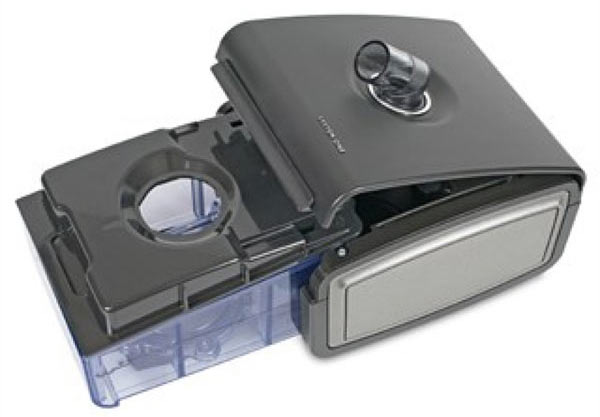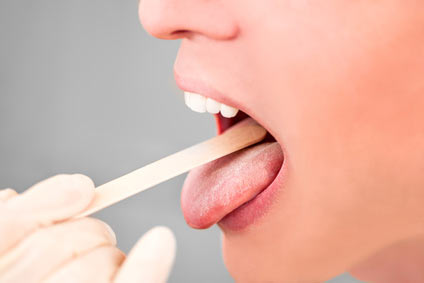CPAP Humidifier and Water Chambers
What is a CPAP humidifer and how to use it to improve your therapy

The CPAP humidifier can help alleviate important problems with CPAP therapy, especially congestion, dry nose and mouth, sinus infection, nasal bleeding and general discomfort.
In this page you will discover:
- what is a humidifier,
- how to choose a humidifier for CPAP,
- types of CPAP water chamber,
- how to use and clean a humidifier for your CPAP machine, to have a more comfortable treatment.
What is a CPAP Humidifier?
The air delivered from your CPAP machine is dry and irritant, and can affect a CPAP user in many ways:
- the nasal passages become stuffy or dry,
- the irrigation could cause nasal bleeding,
- congestion,
- sneezing,
- swelling of the nasal passages,
- very runny nose or excessive mucus,
- sinus infections.
You can prevent these CPAP side effects by adding moisture to the CPAP air with the humidifier attached to the CPAP machine.
Benefits of Using CPAP with Humidifier
Many CPAP users find that their nasal passages and throat become dry or stuffy, during the CPAP treatment. Congestion, sneezing, dry nose or very runny nose can be temporary responses of the lining of your nose as it becomes accustomed to the CPAP pressure and dry air.
This is especially problematic for new CPAP users when they try to adapt to the treatment.
If you have these problems for more than a few weeks, you might want to talk to your sleep specialist about using a CPAP humidifier. This device can really help to alleviate these problems.
Types of CPAP Humidifiers
CPAP Heated Humidifier
The heated humidifiers are becoming almost commonplace because they add so much to the comfort of the CPAP user.
The devices use heat to produce moisture, to control the humidity in the nasal passages. This is the most important feature of the CPAP heated humidifier that can make the difference in your treatment.
The heated humidifier is particularly useful in getting used to therapy, so the beginners in CPAP therapy will find it very practical.
CPAP Passover Humidifier
The passover humidifier is an unheated humidifier, which is much simpler and less expensive than a heated humidifier. The only drawback for this device is that it requires a warm bedroom to be very effective.
The passover humidifier consists of CPAP water chamber, where the water is added inside to help moisten the airflow and reduce irritation to the nasal passages.
The CPAP passover humidifier operation is:
- The dry air from CPAP flows in the water chamber,
- the air picks up whatever moisture it can as it passes over the water,
- the humidified air flows into the long hose to the CPAP mask.
Examples of CPAP Humidifiers and Water Chambers
Click on the following links to see examples ofhumidifiers:
- ResMed H5i Heated Humidifier
- Respironics System One REMstar Heated Humidifier
- Fisher & Paykel HC150 CPAP Heated Humidifier
Click on the next links to see water chambers:
CPAP Humidifier Side Effects
CPAP Hose Rainout
The main problem people come across with using a CPAP with humidifier is what is known as CPAP condensation or rainout. This means that water starts to collect in the mask and can be noisy and annoying. There is also a risk of breathing in a drop or two of water.
The rainout occurs when the humidifier temperature is too high for the temperature of the room. You can avoid this problem in a couple of ways:
- try reducing the heat on your humidifier,
- try insulating your CPAP hose with premade insulators,
- use a heated hose,
- by wrapping the hose in some other material like bubble wrapping, towels, etc.
This video will teach how to prevent the CPAP rainout:
Water for CPAP Humidifier
What Type of Water Do You Use in a CPAP Humidifier?
Is recommended to use distilled or demineralized water for you humidifier. The reason is to avoid a buildup of minerals or lead to mold growth in the humidifier reservoir, which can lead to lung diseases.
The build up of minerals reduces the heating efficiency of the humidifier, it might damage the water chamber, and is unsightly for everyone.
When you're using tap water instead of distilled water, for several days and without cleaning it, you'll see that grungy mess and you'll know not to do it again. Check these pictures of how problematic is tap water to many objects.
Only use bottle water if it is an emergency like traveling.
In this video you can see how to add water to a M Series CPAP Humidifier:
How to Clean a CPAP Humidifier?
First of all, I would recommended to change the water every day, otherwise mold and other organisms can develop. Scientists discovered the water inside the CPAP hose can became contaminated with bacteria Brevundimonas diminuta or Serratia marcescens. Read their study here.
The only way to prevent the bacteria and mold to enter into your lungs is to use filters, or to change the water every day, and clean the humidifier.
You can easily clean the CPAP humidifier in two ways:
- first thing in the morning, just rinse it out with regular tap water and let it dry.
- once a week, you can put a combination of one part white vinegar and two parts warm water in the chamber, and let it sit for 30 minutes. This solution will take care of the mineral deposits.
After 30 minutes, empty the water chamber and wash it with dishwashing liquid and hot water and let it dry out.
You might also want to get some Citrus II CPAP mask cleaner to clean the chamber.
The following video explains how to clean and then fill your CPAP water chamber:
CPAP Humidifier Adjustment
Not everyone feels they need the humidifier, but often those people are from more humid climates. Many people often use the humidifier as a cool passover (not turning on the heat but allowing the air to blow over the water in the chamber) during the more humid summer months.
But in the winter, because of the cold dry weather, they do need the heated humidity.
So, if you live in a very dry climate, you have to have a humidification.
I would even suggest to increase the humidification settings when:
- you are in the dry climate,
- you're experiencing a bit of dryness in the mouth,
- or when you have a bit of congestion in the nose.
The following video explains the settings of the Respironics M Series CPAP Humidifier:
The humidifier settings depends on many things, such as whether your bedroom is climate controlled or not and what your preferences are.
Some find the sweet spot for them and leave it there. Others have to vary humidity settings according to the season of the year. Others may make tweaks according to how their allergies are doing.
Some find humidity comforting, others find a slightly cold blast of air gives them a refreshing feeling, like a step outside in the winter. It varies.
The CPAP humidifier settings are particularly useful in helping you get used to therapy. After a while, most CPAP users, I think, end up using medium to low humidity. A few turn off the heat completely once they are used to therapy and just use the humidifier as a non-heated humidifier.
Some longtime users don't use any humidity at all after a while, especially if they use low pressure. It depends on what you like and what you are comfortable with.
Home › CPAP Humidfier › Congestive Heart Failure Treatment







